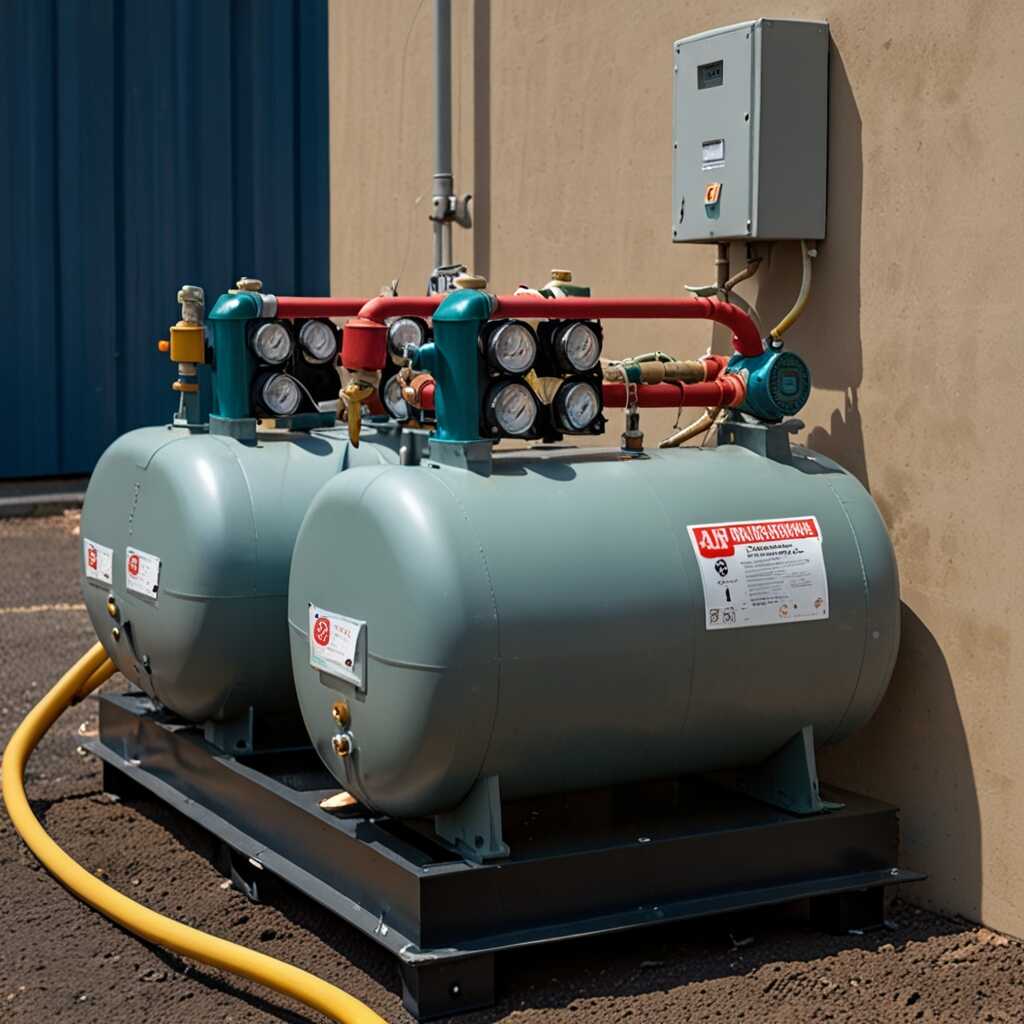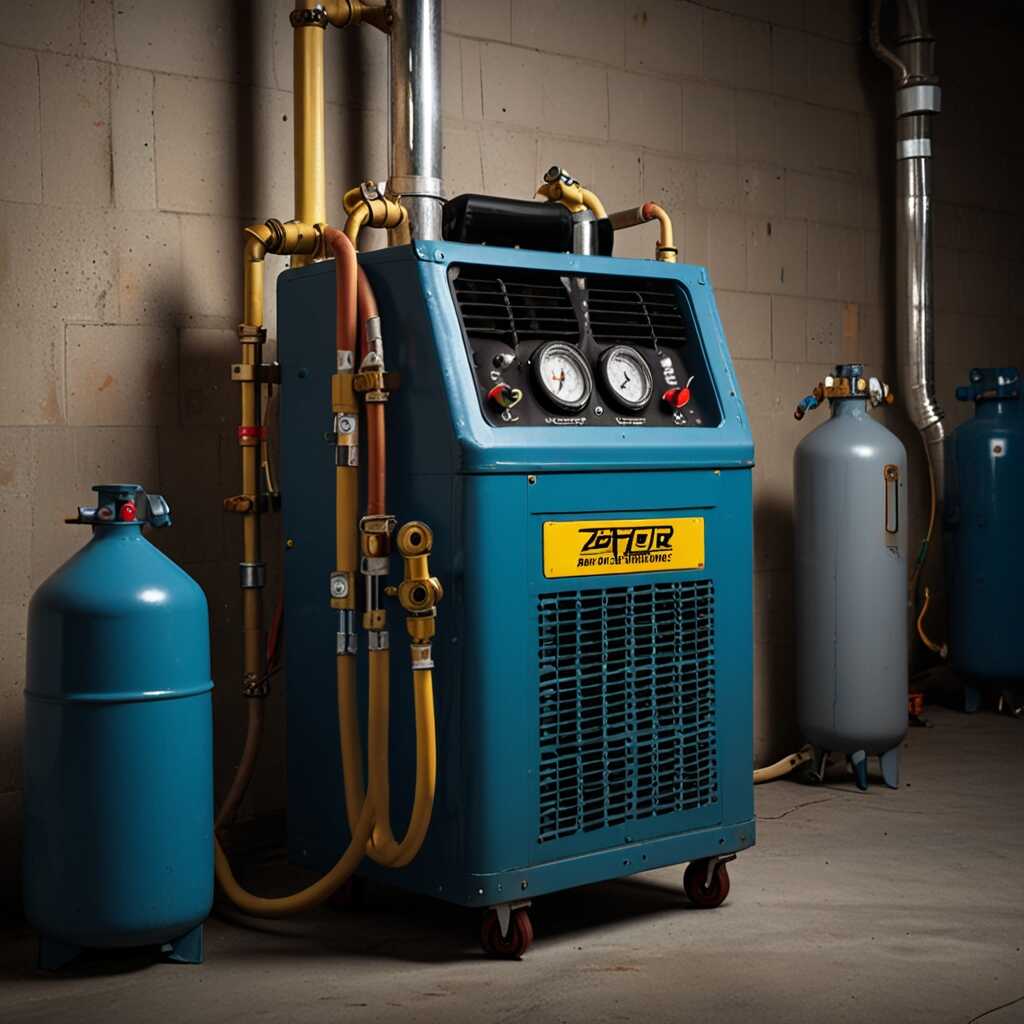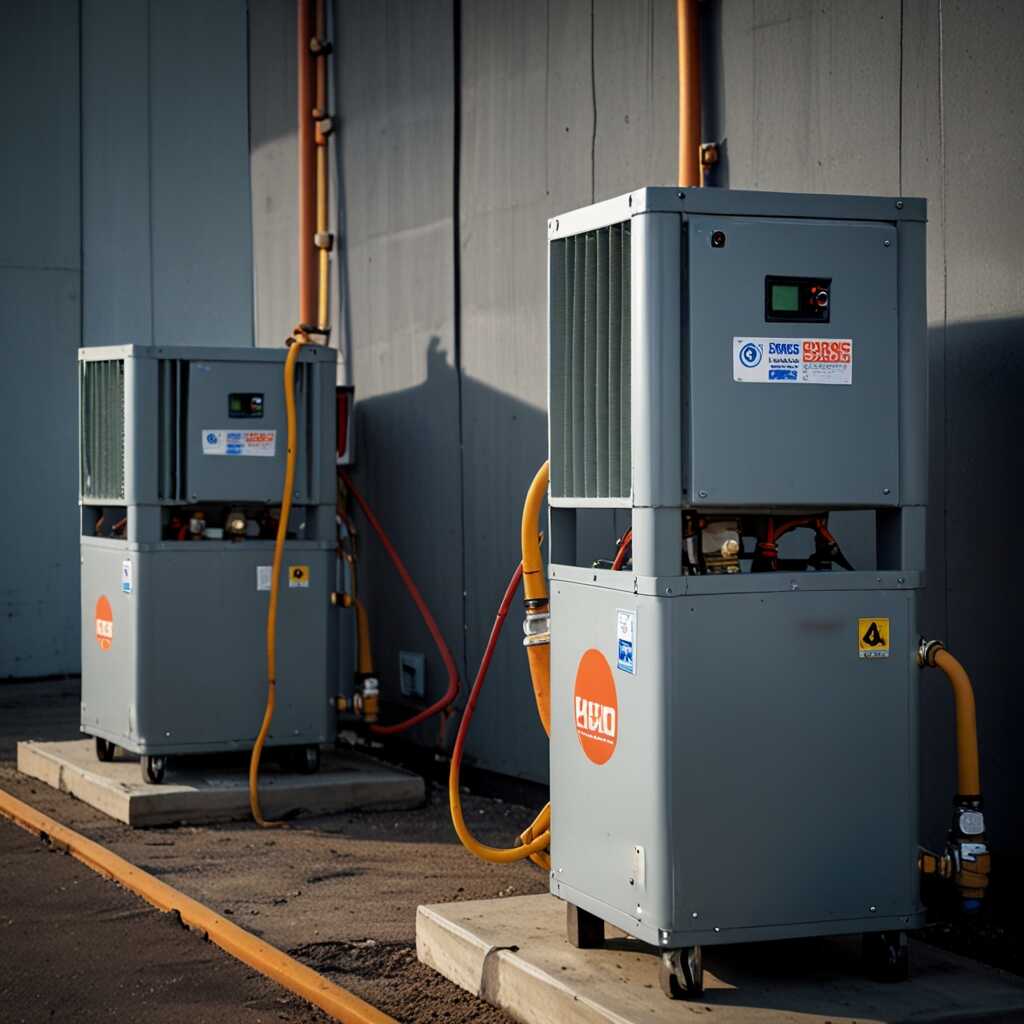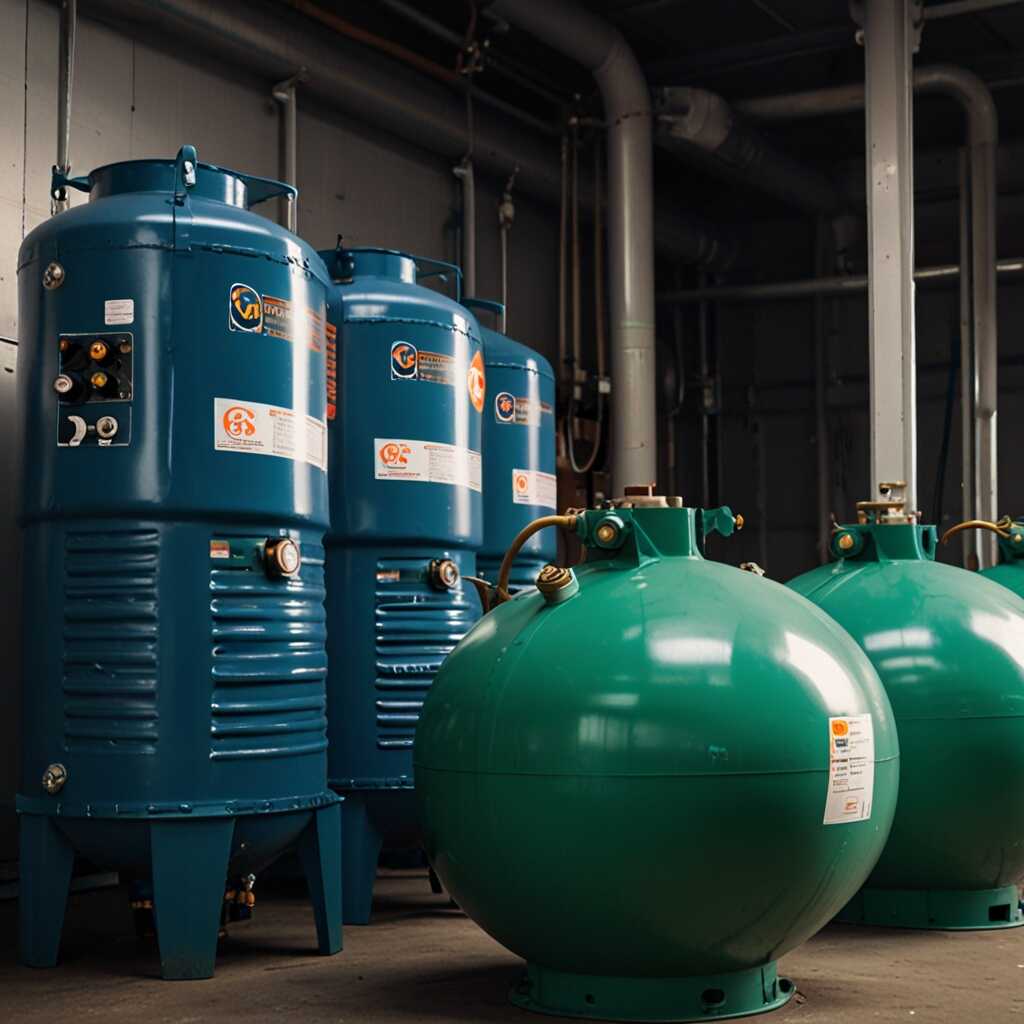The advantages of refrigerant recovery machines equipped with a sub-cooling process are significant for HVAC professionals. These machines enhance the efficiency of refrigerant recovery, leading to faster and more effective service. At Refrigerant Recovery Pro, we emphasize how this technology not only boosts performance but also ensures compliance with environmental regulations. Understanding the technical insights and practical benefits of these machines is essential for anyone working in refrigerant management.
Overview of Refrigerant Recovery Machines and Their Importance
Refrigerant recovery machines are essential tools in HVAC systems. They collect refrigerants when systems are repaired or replaced. Efficient refrigerant recovery enhances HVAC efficiency, ensuring systems operate effectively without leaks. This process is crucial for environmental compliance, minimizing harmful emissions. By adhering to regulations, recovery machines help HVAC professionals maintain industry standards. The recovery time for refrigerants varies based on the system’s size and model, typically ranging from 15 to 30 minutes.
Key Features and Functions of Refrigerant Recovery Machines
Refrigerant recovery machines are designed with features that enhance their performance and reliability. Most machines include powerful compressors, high-quality tanks, and easy-to-read gauges. These components allow technicians to recover refrigerants quickly and accurately, improving overall HVAC efficiency. The machines can handle various refrigerant types, ensuring compliance with environmental regulations. Many models also feature advanced testing capabilities. This helps HVAC professionals perform accurate maintenance and efficient service. Selecting a machine with optimal performance and durability is crucial for HVAC system reliability.
How Sub-Cooling Refrigerant Process Enhances Efficiency
The sub-cooling refrigerant process involves cooling the refrigerant below its condensation temperature. This process helps refrigerant recovery machines operate more efficiently by allowing them to condense refrigerant vapor quickly. Improved energy efficiency occurs as sub-cooling reduces the overall energy load on the recovery system, ensuring fast and effective refrigerant recovery. The process provides greater system reliability, enabling technicians to handle larger volumes of refrigerant without compromising performance. Many HVAC professionals report that using sub-cooling can enhance system performance significantly, often leading to energy savings of 20% to 30% over traditional recovery methods.
Benefits of Sub-Cooling in Refrigerant Recovery
Sub-cooling in refrigerant recovery machines offers multiple benefits for HVAC professionals. This process improves the recovery rate of refrigerants by reducing vapor pressure, which leads to faster evacuation of the refrigerant. Enhanced cooling results in high-quality refrigerant being recovered more efficiently. Additionally, sub-cooling allows technicians to achieve more reliable results, ensuring compliance with industry standards. The efficiency gained through sub-cooling can lead to reduced operational costs, making it a valuable technique in best practices for refrigerant recovery. HVAC professionals often find that implementing this practice provides significant advantages in both performance and regulatory compliance.

Environmental Impact of Refrigerant Recovery Machines
Refrigerant recovery machines, especially those utilizing sub-cooling, offer significant ecological benefits. They help reduce greenhouse gas emissions and the depletion of the ozone layer. These machines enhance refrigerant recovery technology, allowing technicians to recover over 95% of the refrigerants in many systems. By ensuring this high recovery rate, HVAC professionals contribute to environmental compliance and meet various regulatory standards. Responsible practices in refrigerant management are crucial for minimizing environmental harm.
Impact on Greenhouse Gas Emissions
Using refrigerant recovery machines notably decreases greenhouse gas emissions. These machines capture and recycle refrigerants, preventing them from escaping into the atmosphere. Sub-cooling enhances the refrigerant recovery process by stabilizing the refrigerant, enabling its effective reuse. This not only prolongs the life of HVAC systems but also ensures they operate with greater efficiency. Reduced refrigerant emissions significantly contribute to combating climate change and support sustainable practices in the HVAC industry. Refrigerant Recovery Pro’s guidelines help technicians adopt these eco-friendly practices effectively.
Key Numerical Insights on Refrigerant Recovery Solutions
- Sub-cooling can enhance recovery efficiency by up to 25% compared to traditional methods.
- Machines can recover refrigerants in less than 10 minutes per cycle.
- Recovery machines with sub-cooling can handle multiple refrigerant types.
- These systems usually come with a recovery rate of about 4 lbs per minute.
- Operating costs can drop by approximately 15% with efficient sub-cooling processes.
- Some units can recover up to 99% of refrigerant in an HVAC system.
- Training time for technicians can be reduced by about 30% with easy-to-use equipment.

Cost Efficiency Gained from Sub-Cooling Techniques
Implementing sub-cooling processes in refrigerant recovery leads to substantial financial benefits for HVAC businesses. By enhancing operational efficiency, these techniques reduce energy consumption and minimize refrigerant loss. This results in a significant cost reduction. For example, businesses can achieve savings that may average between 10% to 30% in refrigerant recovery costs. Sub-cooling processes improve the reliability of refrigerant recovery machines, ensuring they perform effectively even in challenging conditions. This has a direct correlation with operational savings and overall financial performance improvement.
Understanding Sub-Cooling Process Benefits for Financial Performance
The sub-cooling process provides several advantages that contribute to financial performance in refrigerant recovery operations. By cooling the refrigerant below its saturation temperature before recovery, these techniques increase the efficiency and speed of the recovery process. This not only enhances the durability and reliability of refrigerant recovery machines but also translates to faster turnaround times. Consequently, HVAC businesses can manage more jobs effectively, maximizing profits. Research shows that companies adopting sub-cooling techniques see improvements in their overall operational savings, further demonstrating their valuable return on investment.

Common Refrigerant Recovery Challenges and Effective Solutions
HVAC professionals often face several challenges during refrigerant recovery. Common issues include equipment malfunction, leaks in hoses, and difficulty in recovering certain refrigerant types. Different refrigerant types, like R-410A and R-134A, can affect recovery efficiency based on their properties. The average time for a complete refrigerant recovery process can vary significantly, typically ranging from 30 minutes to several hours, depending on the system size and technician experience. Effective solutions include regular maintenance checks for equipment, using high-quality hoses, and ensuring proper training for technicians to enhance recovery performance.
Enhancing Efficiency in Refrigerant Recovery Systems
To improve refrigerant recovery efficiency, focus on equipment reliability and technician training. Regular testing and reviews of recovery machines help identify inefficiencies. Ensuring that equipment is designed for specific refrigerant types enhances recovery speeds. Using a durable recovery machine with proven performance features can result in faster recovery times, even under challenging conditions. Additional training enables technicians to handle various refrigerants more effectively. By investing in quality tools and knowledge, HVAC professionals can streamline the refrigerant recovery process, ensuring better results and satisfying customer needs.
Significant Advantages for HVAC Applications
- Enhanced energy efficiency minimizes operational costs for businesses.
- Sub-cooling processes ensure a higher recovery rate for refrigerants.
- Units provide safer handling of refrigerants, reducing risk for technicians.
- They support compliance with environmental regulations, promoting sustainability.
- These machines streamline the recovery process, saving valuable time on job sites.
- Technicians can work on multiple jobs efficiently due to faster recovery cycles.
- Better refrigerant management leads to cost savings in the long run.

Best Practices for Compliance in Refrigerant Recovery
Key regulations for refrigerant recovery compliance include the EPA regulations that mandate proper recovery, recycling, and disposal practices. Organizations such as the EPA, ASHRAE, and ISO set the standards, ensuring HVAC professionals understand the importance of following these guidelines. Improper recovery practices contribute to nearly 40% of refrigerant emissions, highlighting the need for effective leak detection methods and reliable recovery techniques. These practices ensure operational integrity in HVAC applications and underscore commitment to environmental compliance.
Understanding EPA Regulations and Compliance Standards
Understanding EPA regulations and compliance standards is essential for HVAC professionals. These regulations dictate how refrigerants must be handled, including their recovery, recycling, and disposal. Adhering to these compliance standards ensures technicians enhance their operational efficiency. Technicians should also engage in leak detection testing. By performing regular testing, they help minimize potential refrigerant losses. Experience and training are vital for maintaining compliance. This knowledge allows HVAC professionals to navigate legal requirements effectively and ensure the reliability of their services.
Success Stories from Sub-Cooling Refrigerant Applications
This section provides insights into real-world HVAC projects that effectively utilized refrigerant recovery machines with sub-cooling methods. In one case, an HVAC technician in a commercial building successfully increased the efficiency of the refrigerant recovery process. By incorporating sub-cooling, he was able to recover nearly 85% of the refrigerant, significantly enhancing operational effectiveness. Brands like Brand A and Brand B were compared during this process, highlighting their performance in handling different refrigerants effectively. Another project reported a 30% improvement in refrigerant recovery efficiency, validating the advantages of using sub-cooling technology across various HVAC applications.
Detailed Results of Sub-Cooling Techniques in HVAC
Sub-cooling techniques in HVAC systems provide numerous advantages, specifically in refrigerant recovery operations. Many HVAC professionals noted that the use of sub-cooling resulted in a drastic reduction in refrigerant waste. Research conducted in 2025 showed that incorporating sub-cooling produced an efficiency improvement of up to 40%. This performance metric demonstrates how effective refrigerant recovery machines can be when designed with sub-cooling features. Studies confirm that these machines enhance reliability and offer robust performance essential for efficient HVAC installations. Such results strongly indicate the growing importance of sub-cooling technologies for HVAC professionals striving for environmental compliance and operational excellence.
Popular Brands and Their Applications in Refrigerant Management
- Brand A offers durable machines, ideal for commercial use but may lack portability.
- Brand B is lightweight and user-friendly, designed for residential technicians.
- Brand C focuses on eco-friendly models that comply with EPA regulations.
- Brand D provides high-capacity recovery options, excellent for larger HVAC systems.
- Brand E emphasizes speed, great for quick jobs but can be pricier than others.
- Brand F is known for its customer support, benefiting HVAC businesses needing guidance.
- Brand G provides versatile machines suitable for various refrigerants but has a steeper learning curve.
Additional Resources for HVAC Professionals on Refrigerant Recovery
HVAC professionals should familiarize themselves with regulatory guidelines from the EPA and other organizations. They are crucial for safe refrigerant management. The best practices include using tools like recovery machines equipped with sub-cooling processes. These methods enhance recovery efficiency. Professionals can find expert reviews on refrigerant recovery equipment on Refrigerant Recovery Pro’s website. Resources like technical support and educational materials will help HVAC technicians stay updated. In 2025, regulations will likely require advanced recovery processes, making these resources essential for compliance and efficiency.
Understanding Regulatory Guidelines for Refrigerant Use
Understanding regulatory guidelines is crucial for HVAC professionals handling refrigerants. The EPA and state regulations dictate the proper management of refrigerants. These guidelines outline recovery procedures, safe disposal, and leak detection requirements. Using compliant refrigerant recovery machines can enhance efficiency and reliability. Training materials on these regulations help professionals implement practices that ensure compliance. Ongoing training, access to expert reviews, and technical support enable HVAC specialists to make informed decisions. Utilizing resources provided by Refrigerant Recovery Pro can streamline this process.